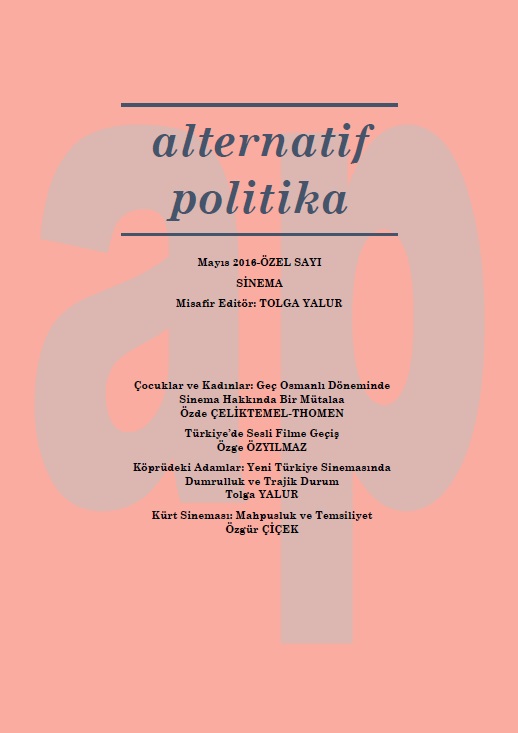Çocuklar ve Kadınlar: Geç Osmanlı Döneminde Sinema Hakkında Bir Mütâlaa
CHILDREN AND WOMEN: AN OBSERVATION ON CINEMA DURING THE LATE OTTOMAN ERA
Author(s): Özde ÇELİKTEMEL-THOMENSubject(s): Gender Studies, Fine Arts / Performing Arts, Family and social welfare, Sociology of Culture, The Ottoman Empire, Film / Cinema / Cinematography
Published by: Rasim Özgür DÖNMEZ
Keywords: Late Ottoman Era; Cinema; Film Content; Screening Venues; Women and Children Spectators;
Summary/Abstract: Children and Women: An Observation on Cinema During the Late Ottoman Era is an attempt to understand and explain the discourses and practices of Ottoman dominant class (bureaucrats, elite, and intellectuals) over children and women spectators regarding cinema and film screening venues. This work does not encapsulate the total cinema history during the late Ottoman era. However, it focuses on a number of important archival documents that portray the concerns of "immorality" in films, such as obscenity, violence, and crime, as well as those that give information about the spectator profile and other entertainments at film screening venues. Firstly, the goal is to follow the concepts of "national values" and the "national generation" about children regarding the criticisms of film content and screening venues. Secondly, this work takes into account is women spectators in relation to Islamic law, religio-moral obligations and reshaping of gender roles at the time. Refik Halid [Karay]’s Troubling Cinema (1918), records collected from the Prime Ministry Republican/Ottoman Archive, as well as periodicals, literary works, and memoirs make up source material. This work suggests that the discourse and practices about children and women spectators are at times protectionist and patronizing, at times didactic and elitist.
Journal: Alternatif Politika
- Issue Year: 8/2016
- Issue No: Special
- Page Range: 1-29
- Page Count: 29
- Language: Turkish

